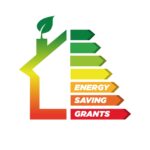In today’s world, the push for cleaner and greener energy sources has become more urgent than ever. As the cost of living rises, people are searching for ways to cut down on energy bills, and renewable energy is an attractive solution. But is solar power affordable for the average homeowner? What financial help is available? Let’s explore how solar power grants can be a game-changer in the quest for sustainability and savings.
Why Choose Solar Power?
Solar power has gained significant popularity in recent years. It’s not just about reducing your carbon footprint, though that’s a big bonus. It’s also about long-term financial savings. Imagine generating your own energy and relying less on the grid—sounds appealing, right? Solar panels convert sunlight into electricity, lowering your dependence on fossil fuels and giving you control over your energy consumption.
But here’s the real question: is the initial investment worth it? This is where solar power grants come in.
What Are Solar Power Grants?
Simply put, solar power grants are financial incentives provided by governments, organizations, or even utility companies to help reduce the upfront cost of installing solar panels. These grants are part of broader initiatives aimed at promoting renewable energy sources. They essentially act as a financial boost, making solar installations more accessible to a wider audience.
While grants vary in their amounts and availability depending on location, they can significantly reduce the cost of setting up a solar system. Think of it as a government-backed head start on your journey to energy independence.
Types of Solar Power Grants and Incentives
There’s more than one way to support solar installations, and governments have designed a range of financial tools to make solar power more appealing:
- Federal and State Solar Grants
These grants are usually aimed at both individuals and businesses, providing lump sums to offset installation costs. In some countries, these may also come in the form of rebates. - Tax Credits
Instead of directly reducing your installation costs, tax credits allow you to deduct a portion of your solar investment from your taxes. For example, in the U.S., the Federal Investment Tax Credit (ITC) lets homeowners claim 26% of their solar installation cost. - Feed-In Tariffs (FiTs)
Under FiT schemes, homeowners who generate excess electricity with their solar panels can sell it back to the grid, often at a premium rate. While technically not a grant, this incentive provides a recurring income stream. - Low-Interest Loans
Some governments offer low-interest loans to help homeowners finance solar power installations. This helps to spread out the cost over time, easing the financial burden. - Utility Company Programs
Certain utility companies offer rebates or discounts for customers who opt for solar energy. These programs are designed to encourage a shift away from traditional energy sources.
How to Apply for Solar Power Grants
The process of applying for a solar power grant can be simple or complex, depending on your location and the type of grant you’re seeking. Here are the general steps:
- Research Available Grants
Start by looking into what grants are available in your region. Government websites, energy agencies, and solar installation companies often have resources to help you navigate this. - Get an Energy Assessment
Many grants require you to undergo an energy audit to determine your current consumption and the potential benefits of solar power. This also helps you understand how much solar energy you can realistically produce. - Submit the Application
Once you’ve chosen a grant, fill out the necessary paperwork. Be sure to include all required documents, such as proof of ownership and your energy audit results. - Approval and Installation
After approval, you’ll receive the grant or incentive. Then, you can move forward with purchasing and installing your solar panels.
Are Solar Power Grants Worth the Effort?
Now that we’ve covered what solar power grants are and how to apply for them, you’re probably wondering: is it worth the time and effort? In short, yes. Solar power grants can dramatically lower the financial barrier to entry, making it feasible for more people to go green.
But beyond the financial savings, grants contribute to a larger movement toward sustainability. By making solar energy more accessible, these grants are helping to reduce the global reliance on fossil fuels and promoting a cleaner environment.
Conclusion: Your Solar Future Awaits
So, are solar power grants the key to unlocking your sustainable future? In many cases, they are. They provide a pathway for homeowners and businesses to invest in renewable energy without breaking the bank. While the application process may take some time and research, the long-term benefits are clear: lower energy bills, increased property value, and the satisfaction of contributing to a greener planet.
Energy Saving Grants is your trusted partner for accessing government energy saving grants designed to enhance the energy efficiency of homes across England, Scotland, and Wales. Specializing in energy efficiency grants, they assist homeowners, tenants, and landlords in securing grants for energy efficiency measures such as solar panels, insulation, and heating systems. Their expertise covers a range of schemes including the ECO, LA Flex, and the Great British Insulation Scheme. With quick decisions, Trustmark approved installers, and free expert advice, Energy Saving Grants simplifies the application process for government grants for energy efficiency, helping reduce energy bills and carbon footprints.













































